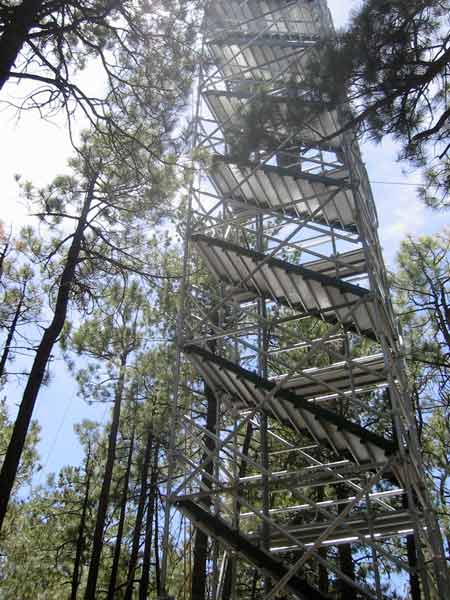Trees Flirt with Death During Dry Periods

Tree growth in temperate forests is driven by availability of water and not by temperature as previously thought, new research suggests.
In a first study of its kind, scientists looked at the survival mechanisms of cone-bearing trees such as pines and firs, in the harshly dry pre-monsoon seasons of the Santa Catalina Mountains near Tucson, Arizona. The annual Arizona monsoon season—beginning in early July and lasting for about two months—normally follows a severe dry spell.
Previous models of typical western or temperate forests consider temperature to be the main driver of respiration and photosynthesis, the process by which plants convert sunlight, carbon dioxide, and water into food.
“My research indicated that for the semi-arid forest that is not the case. It is driven by when water is available, in that the roots do not freeze and thus as soon as the soil moisture is available, whether winter or summer, they will turn on their photosynthetic processes,” said lead study author Constance Brown, a researcher at Indiana University. Conversely, during the pre-monsoon drought period, trees will shut down or severely curtail photosynthesis, she said.
This mechanism is different from cacti, which have adapted to conserve water in hot and arid environments.
“The cacti ecosystem is at a much lower elevation, and the question of water- versus temperature-driven is not an issue in their photosynthetic processes,” Brown told LiveScience. “They only grow up to a certain elevation dictated by temperature and survive by their ability to conserve and utilize water in the semiarid environment.”
The data, collected between June 2002 and December 2004, show that the trees in the predominately Douglas fir and pine forest have evolved the ability to shut down to a near-death state during dry spells, then flourish when it rains.
Get the world’s most fascinating discoveries delivered straight to your inbox.
The results of the study will be detailed in the April issue of the Journal of Arid Environments.



